If your dog growls, lunges, or bites when you approach them near a food bowl, toy, chew, or space, they are exhibiting resource guarding aggression. While resource guarding is a natural dog behavior, it can become a problem when a dog is willing to bite to keep people away, especially if this behavior is unpredictable or you have young children in the home. This type of aggression can be reduced with management, patience, and force-free behavior modification techniques.
Quick Links
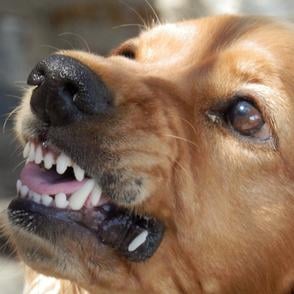
Guarding resources is a natural dog behavior. However, more severe cases of resource guarding can be caused or made worse by a variety of factors. These include:
Our mission is to help save dogs' and cats’ lives through our educational content. To support our efforts, this page may contain affiliate links. We earn a commission for qualifying purchases – at no cost to you.
Resource guarding is when a dog reacts when they perceive a threat to a valuable resource in their possession. The dog feels they are about to lose something and takes action to keep it.
Access to important resources like food, water, relationships, or a safe space is essential to survival. It's hardwired into animal nature to protect these things. What you want to achieve is that your dog feels secure in giving up or sharing resources when asked.
Resource guarding does not always have to end with growling, lunging, biting, or fighting. It often includes more subtle body language communication, called "ritualized aggression," where the end goal is not to fight but instead resolve the issue without physical altercation. Posturing, growling, lip curls, and other aggressive signals are all important parts of canine communication.
Resource guarding becomes a dangerous problem if a dog moves from ritualized aggression to actual aggression — when they are willing to bite or fight to keep an item. This often happens when the ritualized aggression signals go unnoticed or are deliberately ignored.
Possession aggression around food, toys, people, or space, can result in dog bites to humans or fights between your pets. This is especially worrisome in a home with young children, elderly family members, or if the dog is not predictable in what items or when they decide to guard.
Dogs will guard resources from each other, or even other pets in the home, like cats. This is called dog-directed resource guarding (or animal-directed in the case of other species). Guarding behaviors could happen over a certain resting place, food bowls, or high-value chews and toys. When resources are limited, such as when there's only one chew but two dogs, we tend to see an increase in guarding. You may also see an increase in resource guarding when a new pet joins the home.
Fortunately, most dogs will gauge whether a particular resource is worth enough to fight over. There's no point in risking injury by fighting with another dog for something of lower value. Many dogs will communicate with each other using body language and vocalizations to express their desire for the thing the other dog has, or to tell the other to leave them alone.
You can see this in action in this video:
If you have a multi-dog household, you might see the ebb and flow of resource guarding "conversations" they have. This is ritualized aggression. This is part of normal dog communication but can indicate underlying stress.
True aggression is an expensive behavior for dogs to engage in. It risks injury or worse, and most dogs want to avoid it if possible. They may posture and act "tough" but not back it up with true aggressive engagement with the other dog when push comes to shove.
In multi-dog households or environments, resource guarding becomes a problem if the dogs resort to fighting over their resources and the environment is not managed to prevent these conflicts from escalating.
If ritualized aggression crosses the line into true aggression (the intent to harm the other), it's crucial to address the issue to prevent injury and behavioral fallout.
Resource Guarding in Dogs: What To Do (and Not Do)
Take the Survey: What Does Your Dog Resource Guard?
Make a list of all of the things your dog has guarded. Then think about how you can change the environment to remove access to these things or reduce the likelihood your dog will feel the need to guard when they have possession of it.
You can't simply not give your dog a variety of things that they may guard, such as food or edible chews (dogs need to chew). So, use a gate to block off your dog's feeding area during mealtimes or chew time so that no one can approach and make your dog feel the need to react.
This is imperative if you have young children, guests, or elderly parents in the home who might not understand that they can't pet your dog during mealtimes or when they have a chew. Blocking off separate feeding/chewing areas is also important if you have more than one dog and one shows inappropriate resource guarding behavior.
Let your dog enjoy the resource in peace. Ensure that everyone in your home knows that if the dog is eating or enjoying a chew, they are to leave them alone. If it's difficult to confine your dog to a safe area while they enjoy their chew, or you are worried about a choking risk, then simply stop giving chews to them or only give them lower-value chews that they are less likely to guard.
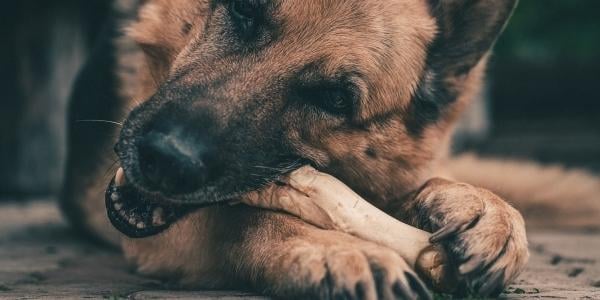
Both the drop it and leave it cues are important skills for all dogs to learn, but especially those that struggle with resource guarding. Drop it means to let go of something that's already in their mouth or possession, and leave it means to turn away from something.
Click here to learn how to teach your dog to drop it. If your dog guards food items, start practicing drop it with toys and then move on to practicing food trades. If they drop a low-value chew, they get a high-value treat. Make sure you're rewarding with something equal or better.
Click here to learn how to teach your dog to leave it. Using a reward of equal or higher value to your dog will help speed up the training practice and increase your success with the leave it cue.
Training a reliable recall (coming when called) with your dog is useful for preventing resource guarding behavior. You can call them away from something that they have rather than approaching them and trying to grab it. Click here to learn how to teach your dog to come when called.
If your dog guards a particular person or place, such as a spot on the couch or your bed, creating a go to place cue means you can ask them to move to another designated spot where they will not be disturbed. This is often termed "stationing" by trainers. Having a behavior like this on cue means you do not need to physically guide your dog to a different space – keeping you safe and helping to prevent your dog from practicing unwanted guarding behaviors. Click here to learn how to teach your dog to go to place.
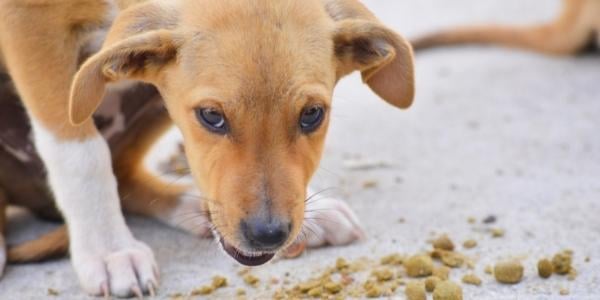
For safety, it's best to connect with a certified canine behavior consultant or veterinary behaviorist before starting behavior modification. You may need to implement safety measures, such as working from behind a baby gate or ex-pen, depending on your dog's case severity and bite risk. Remember, counterconditioning training for resource guarding takes time and repetition!
Think about working in small "slices" when treating your dog's resource guarding. Don't rush through the process by just reaching for their bowl — that's setting them up to fail, and you might get bitten.
With practice and consistency, your dog will learn to anticipate good things when you approach them. In many cases, these dogs choose to leave their food bowl or chew to happily approach you. When before they might stiffen or growl at your approach, with treatment, they instead show loose bodies and happy soft faces in anticipation of something good. This change in body language is the gauge by which behavior consultants know if the treatment is progressing as expected.
Watch this video to see an example of what counterconditioning for human-directed resource guarding looks like:
Addressing food aggression or other resource guarding behaviors between dogs follows a similar plan as the human-directed resource guarding treatment explained above. It can be more difficult, as the treatment plan requires managing multiple variables within the training setup.
Management is crucial! Dogs who exhibit food aggression towards another household dog (or even the household cat!) should always be fed in separate and secure areas. If a dog becomes aggressive towards another dog over toys, it's important to make sure that these toys are not just sitting willy-nilly around your home. For dogs who guard space from each other, blocking access to these areas outside of training and close supervision is a must!
If your dog is food aggressive towards your other dog or pets, or guards toys, space, or even you, connect with a certified behavior consultant or veterinary behaviorist to start working on changing this behavior and creating a more positive emotional response in these scenarios.
Watch this video to see an example of what counter conditioning for dog-directed resource guarding looks like:
Working one-on-one with a certified dog trainer, behavior consultant, or veterinary behaviorist is incredibly beneficial and will increase your chances of success. A behavior professional will make sure you stay safe and that your dog gets the force-free training they need to learn that there's no need to growl and guard certain items and help you with management techniques.
Identifying subtle signs of increasing tension can be difficult for many dog owners, and having the eyes of an experienced professional will make each training session more effective.
Not only will your certified professional build a relationship with you and your dog, but they'll also be able to help you through the specific steps of counterconditioning, all of which are unique to your dog and the resource they are guarding. Due to the potentially dangerous situations that resource guarding can create, it's important to keep safety first — both for you and your dog.
Addressing resource guarding is not a fast process and requires consistent management and training practice. While some dogs may make a lot of progress within a few months of starting treatment, other dogs may never feel fully comfortable with people or other animals approaching their food, things, or space.
The most important thing you can do is to manage the environment to prevent your dog from exhibiting inappropriate guarding behavior. In some less severe cases, this is enough to resolve the issue as long as management is convenient and the resource guarding behaviors are predictable. In other cases, especially those where the guarding behaviors are unpredictable, or the resulting aggressive behaviors are severe, rehoming into an appropriate environment may be a consideration for everyone's well-being.
Never punish a growling dog. You can punish away a growl, sure, but all you've done is make a dog bite more likely. If your dog learns that growling to express their discomfort at your approach results in an aversive (such as yelling, hitting, or a "tap" from a shock collar), and the loss of the item they were guarding, the next time you reach for it, they're more likely to skip the growl and go straight for a bite.
Ignoring warnings will escalate behavioral responses, in both humans and dogs. You don't want to take away important warning signs that your dog needs to communicate with you and others.
A dog growl is not a challenge to you, or your dog being mean or bad. They are trying to communicate with you without escalating to a bite. Always listen to a growl by stopping your approach, taking a step back, and evaluating the situation so you can avoid it in the future and start treating the issue.
In an effort to "show who's boss" or "get a dog used to people touching their things," many dog owners will put their hands into food bowls or arbitrarily take things away from their puppy or dog. Not only is this rude from your dog's perspective, but it often backfires and increases resource guarding behavior.
Without taking the necessary proactive and preventive steps, sticking your hand in your dog's food bowl while they're eating, or just taking away their chew toy will not work as either preventive training or to fix guarding issues. All you're doing is annoying your dog and teaching them that when you reach for something, they'll lose it. It's not the association you want them to have.
Lack of management can exacerbate guarding behavior and puts people or other pets at risk. If you know your dog is likely to guard something, then you must manage the environment to prevent their access to this resource or carefully manage when and where they get this resource.
If your dog loves to grab socks from the laundry basket and then growls or tries to bite when you try to take them away, set yourself up for success by removing the opportunity. Keep the laundry basket up high where your dog cannot access it, or keep the door to the laundry room closed.
If your dog is likely to guard an edible chew from another pet in the home, only give them that chew when they are in a safe place, like a crate, playpen, or other gated-off room that the other pet cannot access. It's best to always feed your pets in separate spaces so that they can relax and enjoy their meals without any tension between them.
The Pet InfoRx® is made possible, in part, through our partnership with AlignCare®.
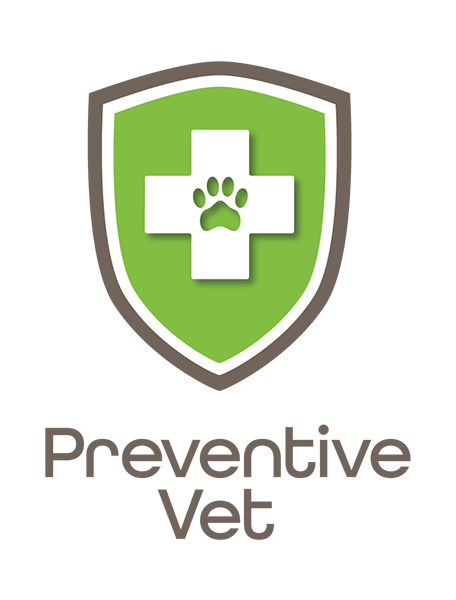
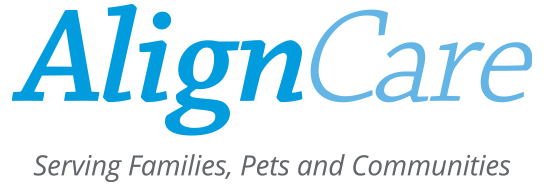
© Preventive Vet. All rights reserved. PreventiveVet.com
